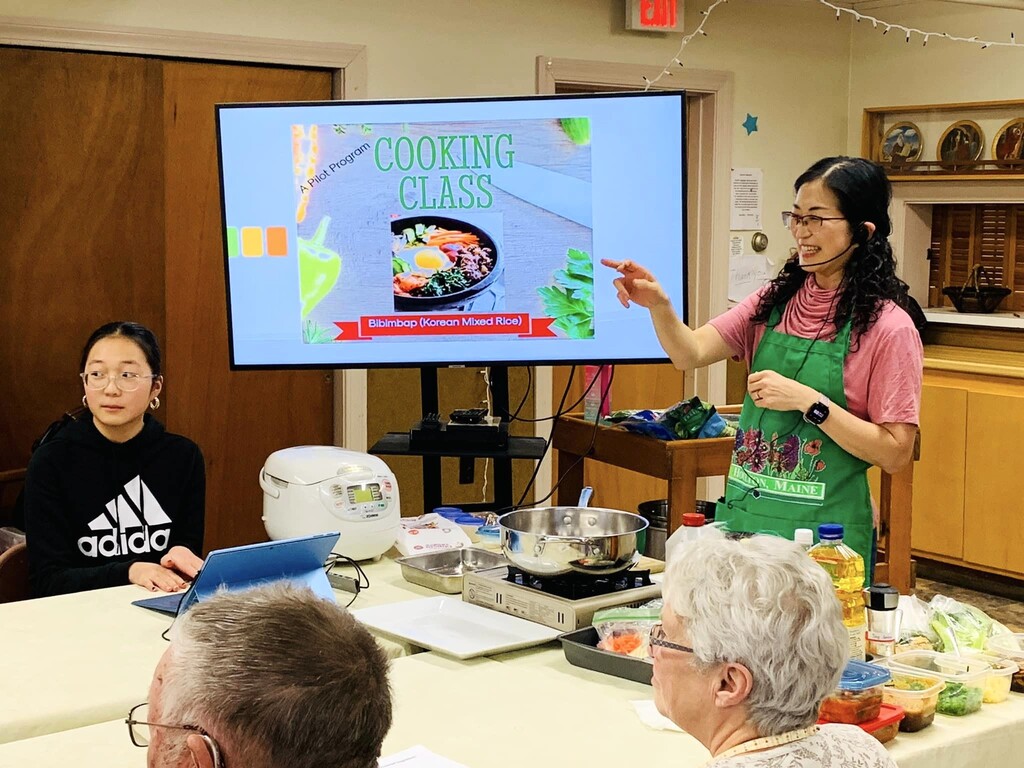
HOULTON, Maine — In Korean bibimbap, there are a myriad of colors, sauces and spices. When the meal of vegetables and meat is mixed together, it all becomes one.
Joyce Kang, a local United Methodist pastor who came to Boston from South Korea in 2008 to marry her husband, Victor Han, who arrived two years earlier, sees a parallel there.
In late January, Kang piloted a Korean cooking class to 19 people as a way to bridge cultures and give those in the community an opportunity to learn more about each other, a decision she made while recovering from thyroid cancer surgery. While Houlton is a small town where people all know each other, those from outside can feel left out, she said.
“When I first came here, I found many barriers with my language and I felt like I was a burden to this town, but I found out I am a blessing,” Kang said. “I contribute to the diversity of Houlton.”
In Korea, when people gather, the main dish is bibimbap with a lot of side dishes and the bibimbap is a kind of Korean spirit acknowledging everyone’s uniqueness and beauty, she said.
Kang and her husband have five children and minister to more than 100 members at churches in Houlton, Hodgdon and Mars Hill. In her 10 years in Houlton, she found several international friends and realized that there are several other Asian families living in this rural community.
Two families own Chinese restaurants. Several others recently relocated to the town from Boston, she said.
“I want to contribute and share our uniqueness with our town and with the cooking class we can get together,” she said.

Several years ago, she had a cooking class for kids and they made kimchi and dumplings together but stopped due to the COVID-19 pandemic. Recently, several people looking for more diverse food options in Houlton asked Kang to start her classes again.
Because she never taught the cooking classes on a larger scale, she opted to start with the pilot program and eventually expand to regularly slated classes for the public to include French and other Korean foods for example.
During her first class, Kang demonstrated how to make bibimbap with detailed explanations of ingredients and where to buy them as well as cooking the meats, vegetables and creating sauces both mild and spicy.
The best rice is short grained sticky rice, and gochujang, a hot chili paste, adds the spiciness. But soy, sugar, garlic, sesame oil, sesame seeds and vinegar also play an important role.
The meat, vegetables such as bean sprouts, onion, shiitake, zucchini, spinach and carrots are each cooked and served separately and placed in a special Korean stone bowl over the sticky rice and topped with the sauces and one fried egg, sunny side up.
Following Kang’s demonstration, all the participants made the bibimbap in teams of two.
“I loved the class,” said Mary Taylor of Houlton. “We had so much fun.”
The classes have a minimal fee of $10 for the ingredients, but it is flexible depending on what is on the menu for a particular class, she said. Kang had hoped to hold her second class this weekend but her health issues will likely push the next class into March or April.
“Together, we can make a new identity,” Kang said.
This story was updated to eliminate a reference to classes on Filipino food.







